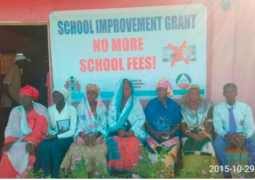Kalilu's back way story
The book is divided into sixteen chapters in chronological order, that is, the chapters follow the author’s story from when he set out from his homeland to the time that he arrived in Europe,
This book fulfils many ends at the same go. Firstly, it is semi-autobiographical. The books tells us about a particular aspect of the life of the author; most specifically his travails to migrate from his homeland in search for greener pastures, if I may use this cliché. Kalilu's account gives us much insight into this critical stage of his life; critical because it was a moment of make or break for him as a young man eager to better his ways and life. He could get stranded in the merciless sands of the Algerian Sahara or in the choppy waters of the
The book is also a travelogue, partly. It is about the author's experiences or diary in a long winding journey that took him from The Gambia to nearly other half a dozen countries in West and
This is why I dare say that this book is also of sociological and anthropological import. In each Chapter detailing the authors' experiences as he passes through a particular country, the author gives us tidbits of the lives of the people in that country. Moreover, he gives us an idea on how the network of human traffickers operate; the checks and balances and the semblance of administration they have established so as to make their dirty work unnoticed and to maximize profits.
The theme of the book as you know is the illegal migration by young Africans to Europe which reached a crescendo in 2007, when countries in the West African littoral were suddenly inundated by multitudes of young man and women journeying to Europe in search of jobs, through the dangerous waters of the Atlantic. The book is therefore very relevant to our society as the illegal migration may have reduced due to better policing, but it has not completely stopped. The book will therefore help to sensitize the public on the many perils of such desperate journeys. This book is an advocacy tool.
As a translated work from the original Spanish, the diction may sound frayed in some few corners, but generally the narration is free flowing and quite digestible.
I highly recommend this book to the public.
Available at Timbooktoo, tel 4494345.




